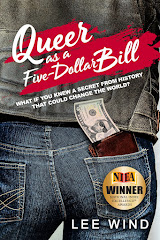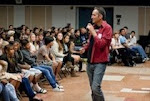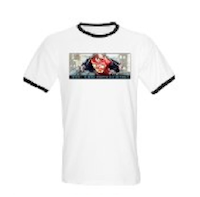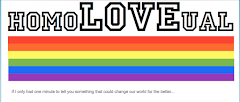Jessica Dandino Garrison, senior editor at Dial Books for Young Readers and voted “Most likely to eat the frosting off one too many cupcakes and regret it for the rest of the morning.” She has edited I’ll Give You the Sun, My Life Next Door, The Books of Elsewhere, Here Comes the Easter Cat, and others. She looks for middle grade and YA across all genres with robust plots, writing that has literary quality but commercial appeal, a strong, fresh voice, emotional heart and heft, and often a dose of moral ambiguity. Her picture book tastes tend toward the character-driven and humorous, with a subtle takeaway and a bit of bite.
 |
| Senior Editor at Dial Books for Young Readers Jessica Dandino Garrison |
Here's our interview:
Lee: You edit (and acquire) Picture Books, middle grade and young adult novels - quite a span of age ranges and focii (wait, that is the plural of focus, right? Oh, if only there was an editor around... wait!)
Jessica: “Focii” or “foci”—your guess is as good as mine, man! I need a shirt that says “I ♥ copyeditors” because this is so their expertise and so not mine. I’ve just checked with Dial’s copyeditor, and it’s “foci” with one “i,” though “focuses” would be okay too, which is good, because otherwise I’ve been saying the wrong word my entire life.
Lee: Editor (and copyeditor!) to the rescue...Thanks! What's your take on (and perhaps, advice for) authors who also want to write for all three (PB, MG and YA)?
Jessica: My advice is always to know your category. In other words, read, read, read, read, read. Whether you’re writing picture books, middle grade, YA, or all three, know what else is out there, know what you personally like and why, and know where your story fits in the mix, what its “compatriots” are—those stories of a similar ilk for a similar audience that are already available and being read. And certainly don’t feel you have to write in all three categories. Write what you love and what feels most natural to you. Most of the authors I work with focus their energy on one category to start. Once they’re a little more established, they might decide to stretch and try something new. But new writers should certainly explore all three if they’re keen—it’s hard to know what you’re good at before you’ve tried it.
Lee: You'll be giving a breakout workshop on the conference Saturday that's sure to be packed - so much so it's running both in the morning and afternoon: "Rules for Picture Book-making and Why We Sometimes Break Them." Can you give us a sneak peek at one of those rules and how someone broke them?
Jessica: One of the most common tenets of picture book writing these days is to keep your story short and bear in mind the 32-page(ish) format. I like that one a lot myself. But then I went ahead and signed up Deborah Underwood and Claudia Rueda’s HERE COMES THE EASTER CAT and HERE COMES SANTA CAT plus two more CAT books—and each of them is upward of eighty pages. What? Craziness! In fairness, they’re still very, very spare—just a few words per page—but given the rhythm of these stories, we realized they just needed more pages to make the jokes and surprises and momentum work. They’re essentially comic strips divided by page-flips instead of panels. So it’s true—sometimes rules are meant to be broken.
Lee: I believe it was Linda Sue Park who challenged writers who work on picture books to read 1,000 picture books, with the theory that by the time you get into the five and six hundreds, you're learning, you're seeing patterns, you're attaining a different perspective. Ostensibly, by the time you get to 1,000, you've figured some important stuff out. I do have a friend,
Sara Wilson Etienne, who took the challenge and read 1,000 picture books in one giant push over 100 days. An amusing aside is that what broke out for Sara ended up being her YA novel, Harbinger.
What's your take on Linda Sue's advice?
Jessica: Put it this way: In my first answer, where I wrote “read, read, read, read, read” I could have written it a thousand times instead of five. I think it was picture book author Carolyn Crimi who told me she not only read a ton when she was learning her craft, but she took her favorite picture books and typed them out in a Word document so she could see how they looked on a single blank page, alone, without art. In the process, she learned a lot and created a sort of muscle memory for the rhythm of the picture book format.
Lee: That's a great tip! What about for novelists - what advice would you offer those of us who write middle grade and young adult novels?
Jessica: Part of the reason to read widely within middle grade or YA is to be able to identify, and eventually internalize, what makes a story middle grade vs. YA vs. adult. Then you can apply that to your own writing to better engage your intended audience, to better understand where your novel fits, and to better pitch your novel to agents and publishers. My other bit of advice, which is nothing new, is to not chase trends—by the time your novel is ready to be submitted, that trend might be long over. Write what you love. Be original in your ideas. Trust your own voice. Understand what you’ve created.
Lee: When you attend a conference like #NY15SCBWI, are you open to finding new writers and illustrators?
Jessica: Absolutely. That’s why I’m here.
Lee: Newbies are often surprised to discover that if they write picture book texts, it's the editor who makes the selection of illustrator. Can you share a bit about how that matching process works, in terms of how you find illustrators and how the art department interfaces with the process?
Jessica: Usually I’ll see the art in my head when I read a picture book text I’m really enjoying. It’s often a general style of art, and sometimes I can extrapolate that to a specific artist or artists whose work I know. Sometimes not. In the latter case, I find myself trying to explain to my friend and Dial’s art director, Lily Malcom, what I see in my head. This is not always easy. Lily is very patient. And then we sit down together to look at artists who match that vision. Lily and her designers will often toss out ideas that are, stylistically, totally different from what I have in mind too, which is smart. Sometimes what you want isn’t what you need.
Lee: Short, shorter, shortest. It seems like the 'ideal' word count for a picture book text keeps dropping and dropping... It used to be "under 1,000" but in recent years I'm hearing "Under 500." How much does word count matter, and is there a number you hope for when you get a submission?
Jessica: Er, see “rule breaking,” above. :) The CAT books are an exception, though. By and large, yes, I personally do prefer shorter texts. It’s just what I like to read. My tastes tend toward stories that are humorous and where the art and text are sort of seamless, and that often comes with a certain rat-a-tat-ness. Most of the picture books I edit end up being under 1000 words, and more often under 500.
Lee: Do you see a place for longer, story-book picture books in the future?
Jessica: Despite the answer above, yes. Another picture book I recently edited, Dashka Slater’s DANGEROUSLY EVER AFTER, which is an uncommon princess story, is lengthier than what’s common these days, and I heard from a lot of people that they enjoyed reading it aloud to their kids for this reason, like you would a classic storybook. Parents told me it bridged the gap between, say, their eight-year-old and five-year-old at bedtime, offering something in between. And like I’ve said, rules are, occasionally, meant to be broken.
Lee: Speed round! Karaoke song?
Jessica: Never. It will never happen.
Lee: (laughing) Ice cream flavor?
Jessica: Salted Caramel and/or vanilla. Who’m I kidding? And/or? And.
Lee: Childhood book you loved and still have a copy of?
Jessica: MISS NELSON IS MISSING, IN THE NIGHT KITCHEN, and HAROLD AND THE PURPLE CRAYON for picture books. BEHIND THE ATTIC WALL for middle grade. TO KILL A MOCKINGBIRD for MG/YA/adult (it’s kind of all of them, isn’t it?).
Thanks so much, Jessica!
If you'd like to attend Jessica's session and be part of all the craft, opportunity, inspiration, business and community of SCBWI's Winter Conference, we hope you'll join us in New York City, February 6-8, 2015.
You can find out all the details and register here.
Illustrate and Write On,
Lee
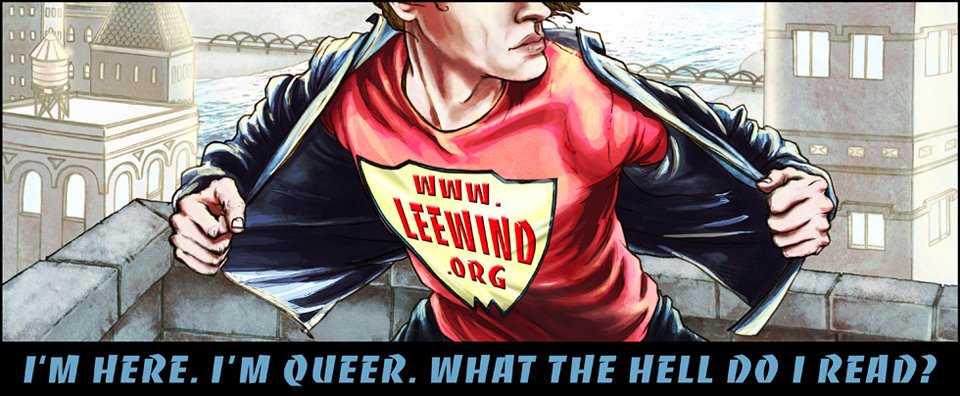960.jpg)


















